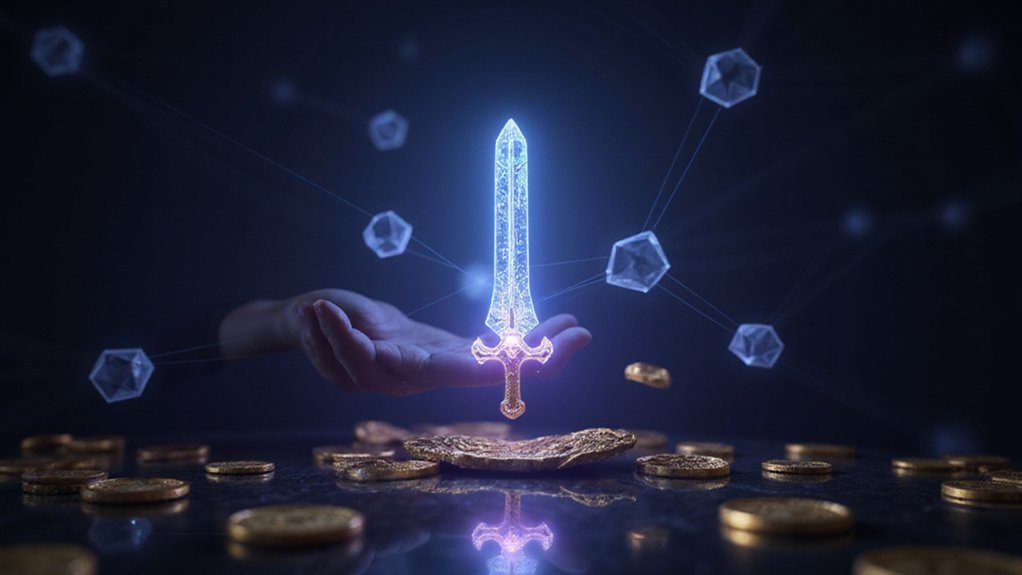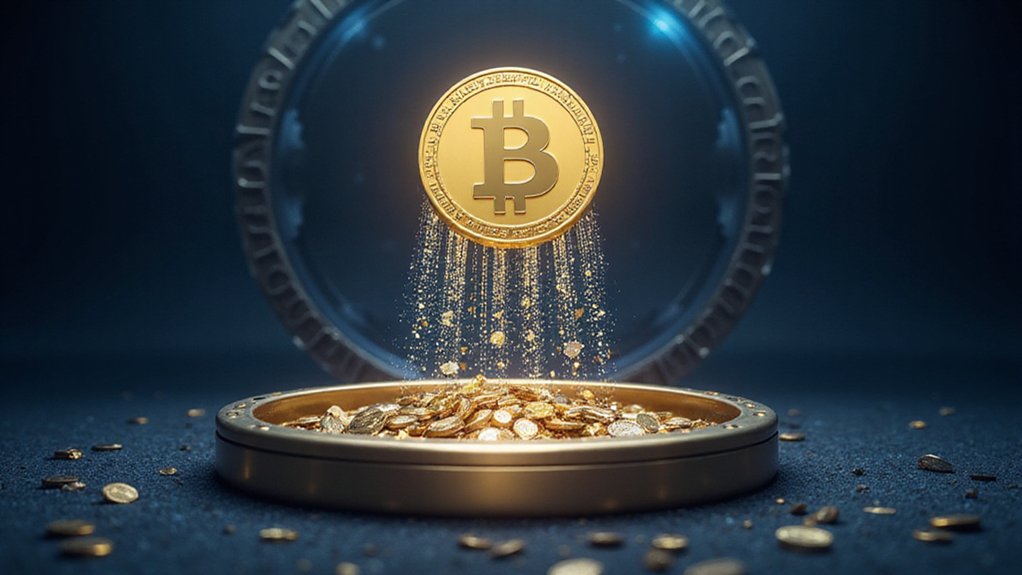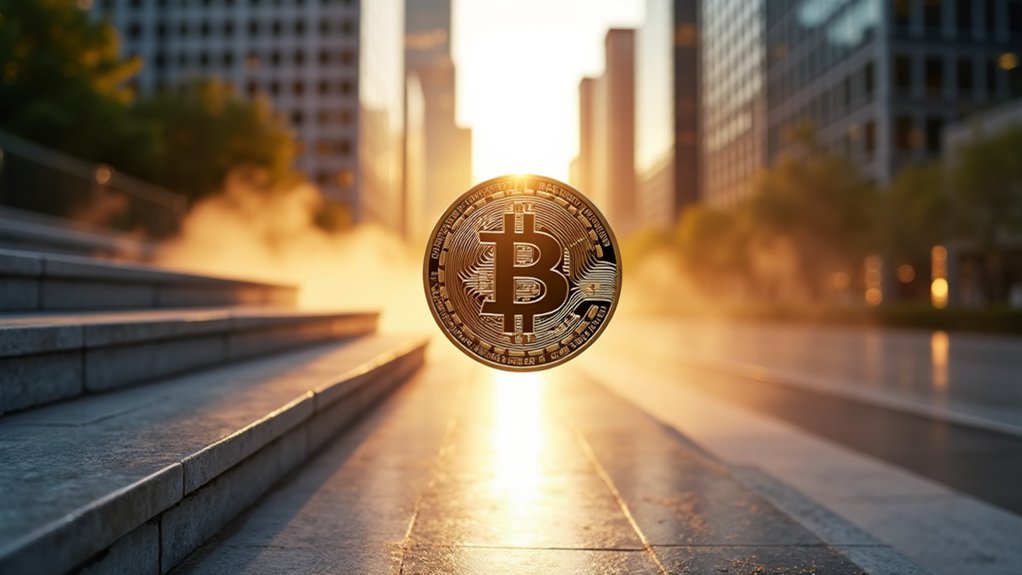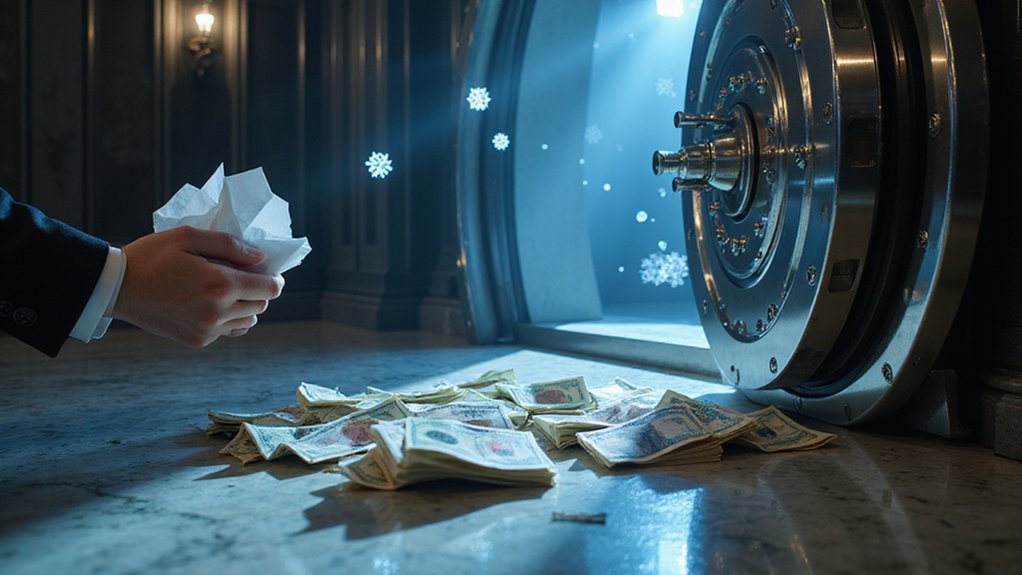Gaming NFTs represent blockchain-enabled digital ownership that transforms virtual assets into tradeable property, with the market projected to surge from $4.8 billion to $44.1 billion by 2034. Smart contracts facilitate cross-platform interoperability while play-to-earn ecosystems like Axie Infinity generate real income streams for players. Critics question whether this innovation truly empowers gamers or simply monetizes digital scarcity—a debate that intensifies as regulatory frameworks scramble to address this emerging financial frontier.
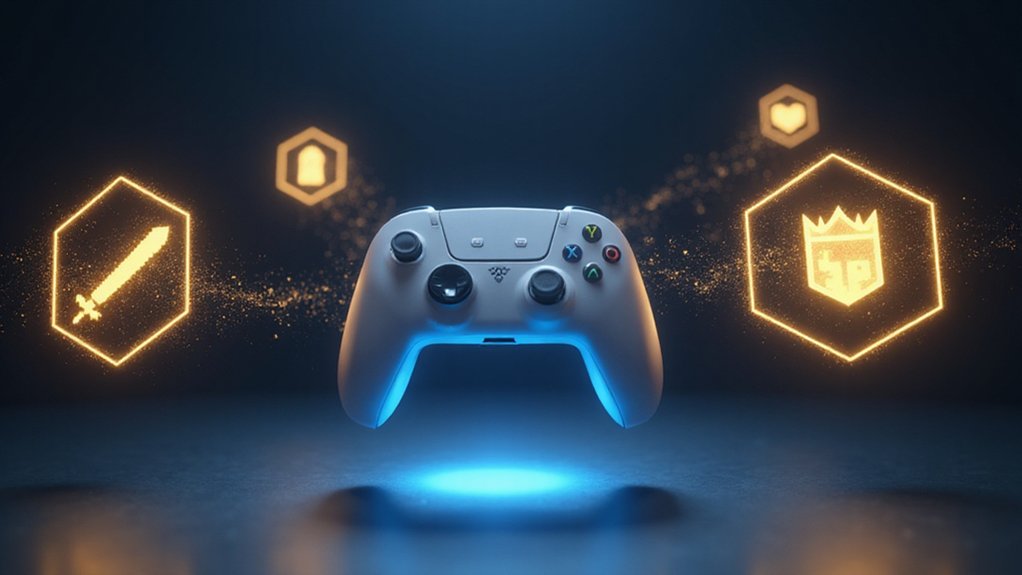
The gaming industry’s latest collision with blockchain technology has produced what might charitably be called an interesting phenomenon: a market where digital sword ownership carries the same gravitas as securities trading.
The global gaming NFT market, valued at $4.8 billion in 2024, projects to reach $44.1 billion by 2034—a nearly ninefold increase that suggests either revolutionary transformation or spectacular bubble dynamics, depending on one’s disposition toward digital alchemy.
The gaming NFT market’s projected ninefold growth suggests either revolutionary transformation or spectacular bubble dynamics, depending on one’s disposition toward digital alchemy.
This remarkable 24.8% compound annual growth rate reflects more than mere speculative enthusiasm.
Smart contracts now enable what proponents term “true digital ownership,” allowing players to monetize virtual assets across platforms with unprecedented liquidity.
The Play-to-Earn model has transformed gaming from entertainment expense into potential income stream, though whether this constitutes economic innovation or elaborate pyramid scheme remains hotly debated among industry observers.
Major players including Axie Infinity, The Sandbox, and Gods Unchained have established ecosystems where rare digital artifacts command real-world valuations.
These platforms facilitate cross-platform asset interoperability—a technical achievement that would impress even skeptics, were they not distracted by the philosophical implications of paying mortgage-sized sums for pixelated creatures.
Regional dynamics reveal fascinating patterns: North America dominates market share through established infrastructure and consumer bases willing to embrace digital scarcity as investment thesis.
Meanwhile, Asia Pacific emerges as the fastest-growing region, driven by blockchain adoption rates that suggest either superior technological sophistication or different risk tolerance thresholds.
The monetization possibilities extend beyond individual players to developers and content creators, who benefit from expanded revenue streams through NFT-based asset creation.
Virtual economies now generate investor confidence and capital flows traditionally reserved for tangible sectors, creating what economists might recognize as legitimate market dynamics—if one accepts virtual swords as legitimate assets.
The rapid evolution includes Layer 2 solutions like Polygon, which address scalability challenges that previously hindered mainstream adoption of blockchain gaming.
Regulatory frameworks struggle to adapt to this brave new world where digital ownership transcends traditional game boundaries.
As policies develop to address cross-border asset trading and fraud prevention, the industry faces the perpetual tension between innovation and investor protection.
This tokenization of gaming assets demonstrates how fractional ownership can revolutionize traditional entertainment markets by enabling shared investment in rare digital items.
Strategic partnerships between industry leaders, such as Sandbox with Affyn, continue to expand interoperable metaverse capabilities and strengthen ecosystem development.
Whether gaming NFTs represent the future of digital ownership or merely expensive digital collecting remains the trillion-dollar question—quite literally, given market projections approaching $1.08 trillion by 2030.
Frequently Asked Questions
What Happens to My Gaming NFTS if the Game Shuts Down Permanently?
When a game shuts down permanently, players typically face the harsh reality that their NFTs become basically worthless digital artifacts.
Despite blockchain’s decentralized promise, most gaming NFTs depend on centralized infrastructure and game-specific utility.
The assets lose functionality, market value plummets, and transferability to other platforms remains limited.
Players often discover their “true ownership” was merely an illusion—a costly lesson in the gap between theoretical permanence and practical utility.
Can I Transfer NFTS Between Different Gaming Platforms and Ecosystems?
Currently, transferring NFTs between gaming platforms remains largely theoretical—most games operate on single blockchains with incompatible protocols.
While some platforms boast interoperability features, cross-chain transfers face significant technical barriers and scalability concerns.
The promise of seamless asset mobility across gaming ecosystems sounds compelling, yet developers must first overcome regulatory uncertainty and achieve widespread adoption before players can genuinely expect their digital sword to follow them from one virtual world to another.
How Do Gaming NFTS Affect Game Balance and Fair Play for Players?
Gaming NFTs fundamentally disrupt traditional balance mechanisms by introducing market-driven asset valuations rather than developer-controlled scarcity.
Players wielding expensive NFT weapons create pay-to-win dynamics, while blockchain transparency theoretically enhances fair play through immutable transaction records.
However, the irony remains palpable: decentralized ownership often centralizes power among wealthy collectors.
The “play-to-earn” model transforms gaming into labor, where grinding becomes profitable employment—assuming volatile NFT markets cooperate with players’ retirement plans.
What Are the Tax Implications of Buying and Selling Gaming NFTS?
Gaming NFT transactions trigger capital gains taxation upon sale, with profits calculated as sale price minus cost basis (including those delightful gas fees).
Creators face ordinary income treatment, while frequent traders may encounter self-employment tax obligations.
The IRS’s recent $600 reporting threshold guarantees virtually all meaningful transactions require Form 8949 documentation.
Certain gaming collectibles—think rare character cards—potentially face the punitive 28% collectible rate, though classification remains surprisingly ambiguous.
Do I Need Cryptocurrency Knowledge to Participate in Gaming NFT Markets?
Cryptocurrency literacy proves essential for gaming NFT participation, despite platforms’ attempts at user-friendly interfaces.
Players must grasp wallet management, gas fees, and token economics—fundamental concepts that determine profitability beyond mere gameplay mechanics.
While some platforms offer educational resources, understanding blockchain transactions, smart contract interactions, and market volatility remains vital.
The tax implications discussed previously become particularly complex without foundational crypto knowledge, making financial literacy indispensable for serious participants.
